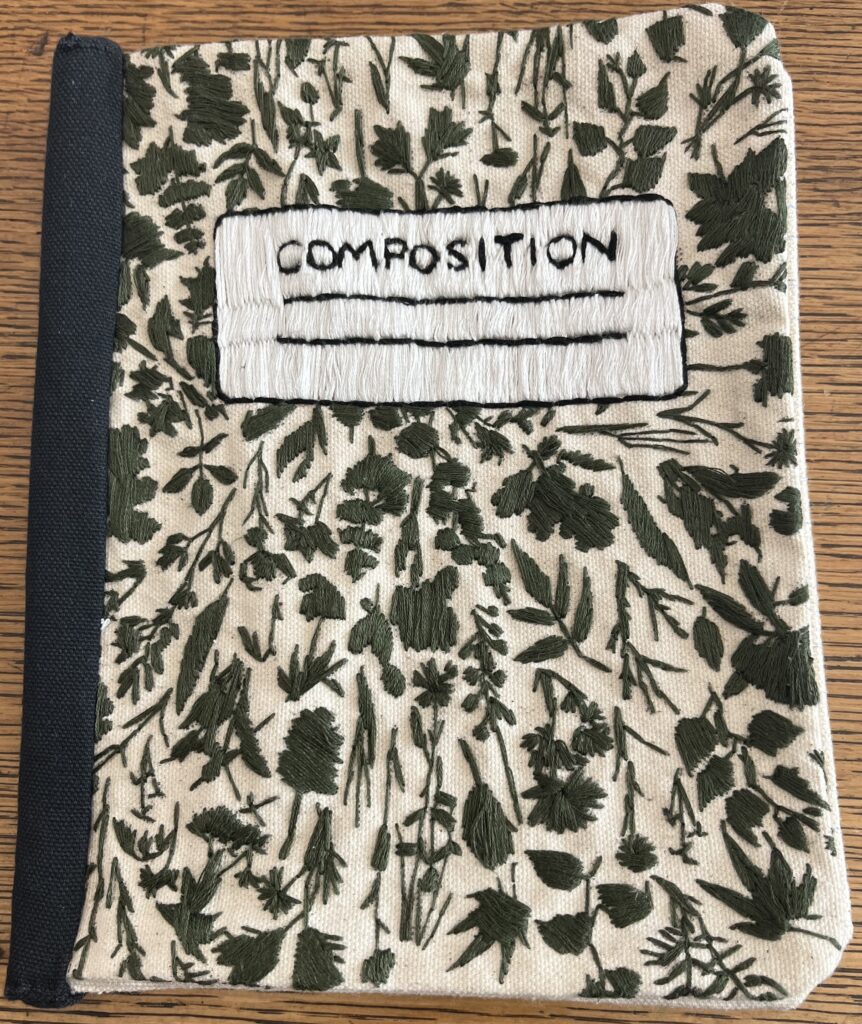First and foremost, I’d like to take a moment to acknowledge how creative and cool Common Threads is once more. I’m glad I went with my gut and chose this book to adopt for the semester because it truly was fun to study and write about. I have thoroughly enjoyed my time with Common Threads Vol. 60 and hope to encounter another one of Candance Hicks’ creations some day.
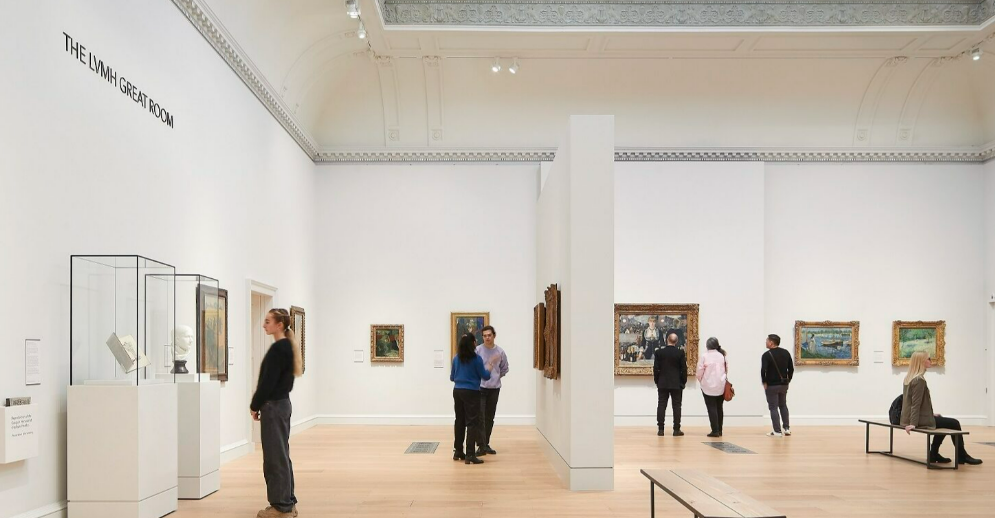
Though a remediation of the traditional composition notebook, Common Threads is a contemporary artist book that has found a home in the library of a prestigious liberal arts university, and other volumes in the series are homed in art galleries and archives across the nation. With that in mind, I think that it’s safe to assume that modern, English speaking, upper to middle class readers who have an admiration for art are the intended audience.
I believe the book calls social norms of how we make, read, and enjoy books and other forms of literature into question with the hopes of pushing readers to think critically about the question we have all been exploring this semester – “what is a book?” In the context of a course about picture books specifically, I think Common Threads also muddies the connection between words and images, urging its audience to explore their own interpretations of that relationship,
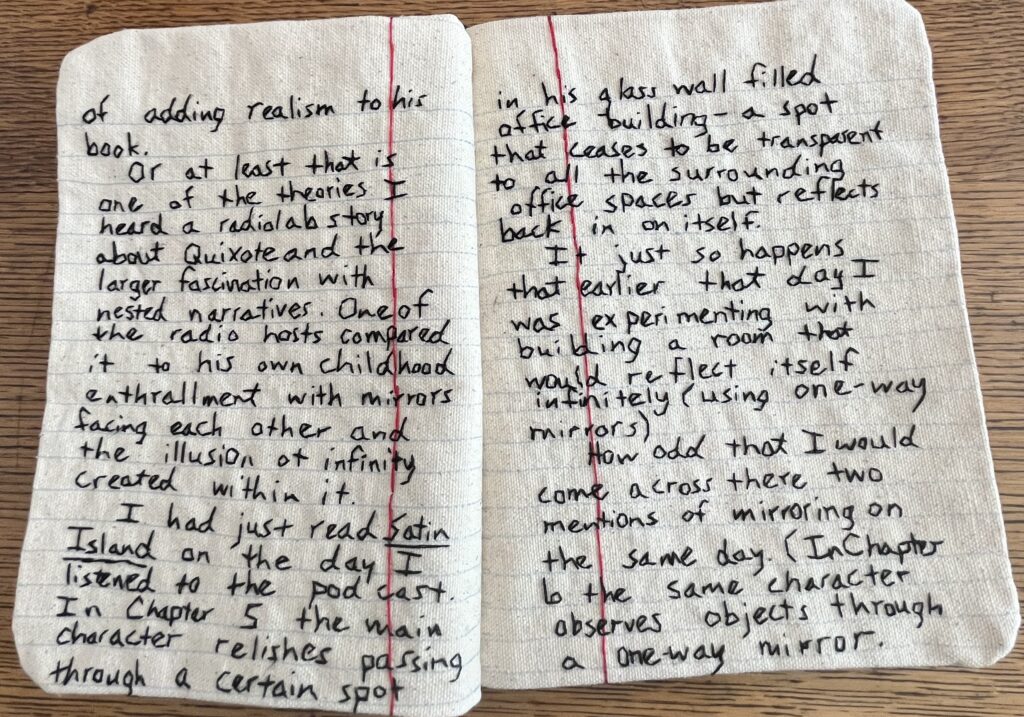
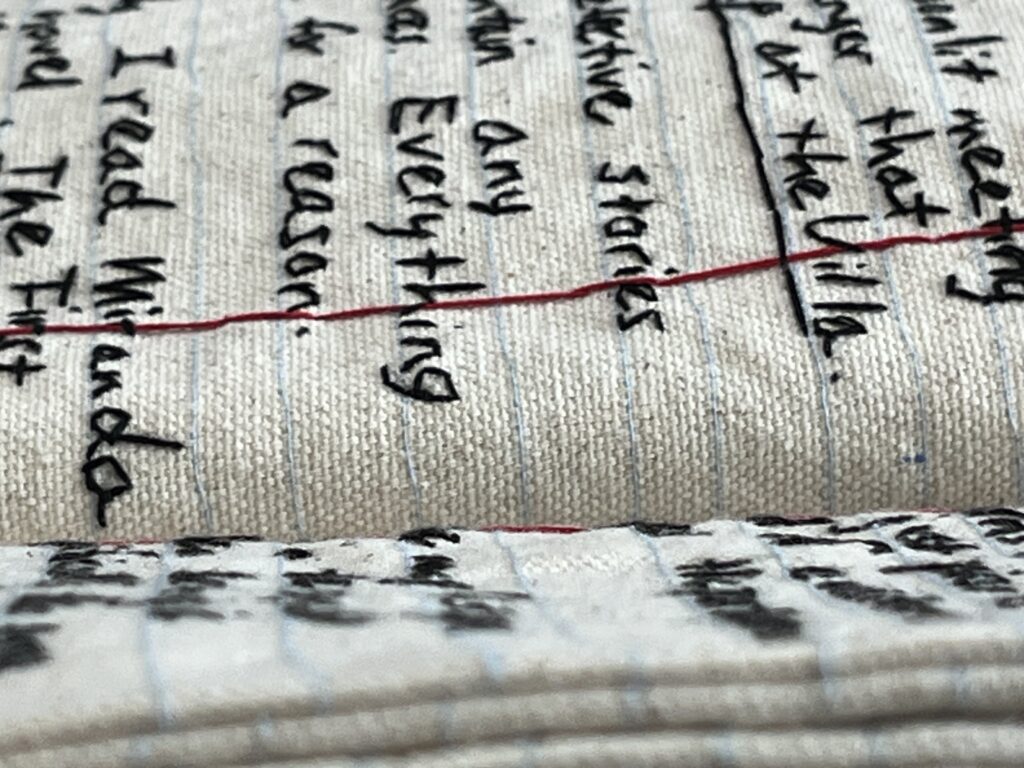
I’m not quite sure how Wesleyan acquired the book, but I don’t believe it’s been passed around much before it got here. Common Threads is stored safely in Wesleyan’s special collections in a cozy, cardboard box, where it’s rarely touched by light or fondled by library visitors, so it hasn’t endured any noticeable changes or signs of aging since its creation. I assume this is due to its newness, but also its material, as canvas doesn’t really wear much if stored properly.
I think it’s important to note that in relation to others’ pet books, Common Threads is extremely new. The book was created in 2015 and the ongoing series as a whole is still in its infancy, so it honestly feels a bit premature to reflect on its afterlife. However, I can still reflect on its current impact and imagine the ways in which future generations or beings would interact with it.
There’s a chance that artist books, such as this one, could become more mainstream in the future. Even though they aren’t easily mass-produced, they are highly sought after. As stated in my first blog post, Candace Hicks has been able to sell books from her series for thousands of dollars.
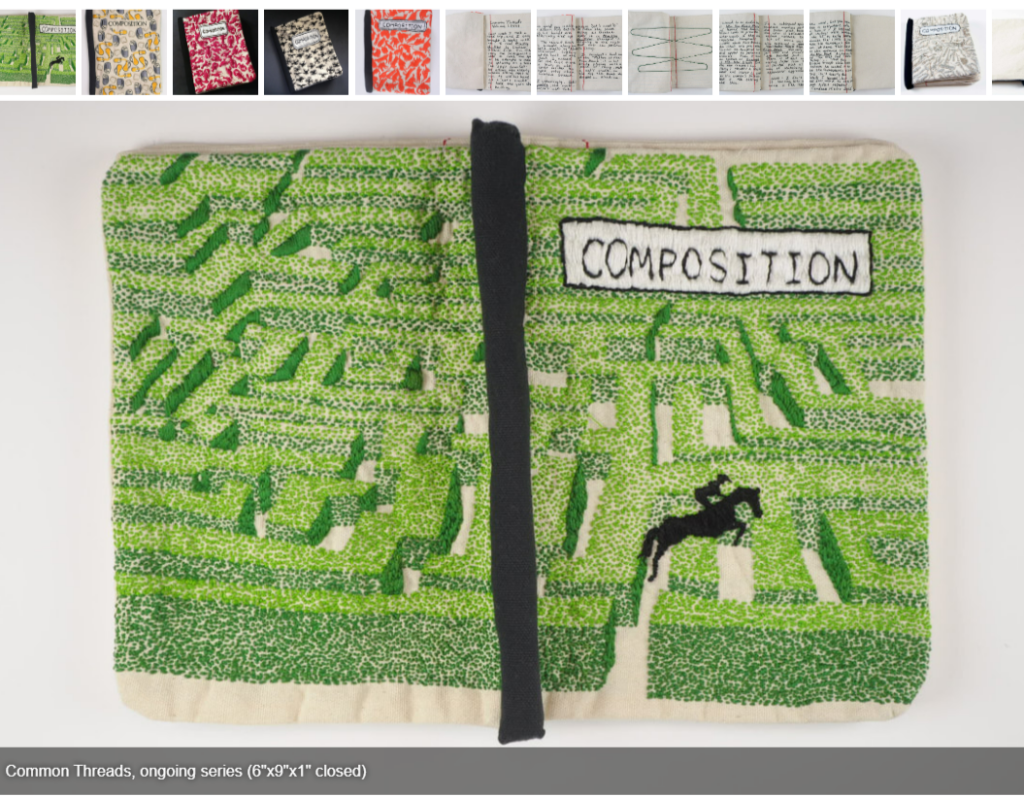
With climate change or some other major event that impacts our access to certain resources, I can picture a world where people are forced to use uncommon materials, such as canvas and thread, to manufacture books. On the other hand, in the same instance, I can imagine people needed to upcycle the book to repurpose the canvas and thread for something else entirely!
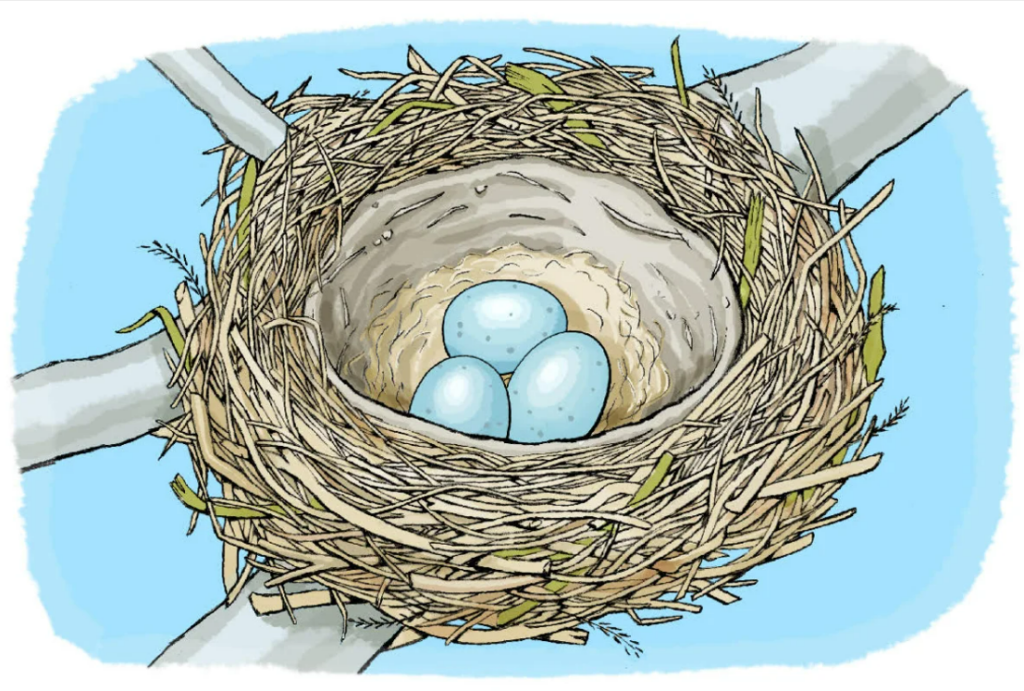
In a post apocalyptic world where humanity was no more, I’m not sure what would come of this book. I’m not familiar with the compostability of canvas and thread, so it’s possible the book would last for centuries. Given the perfect set of circumstances, maybe an animal of some kind could use it for shelter, or as part of a nest. Unless engulfed by fire, I imagine the next life forms to inhabit the earth would find Common Threads and marvel at the innovation of humans.
Maybe they’d think it was a book about botany due to the patterns on the cover, or a long lost journal.
